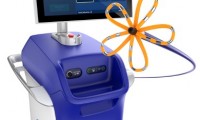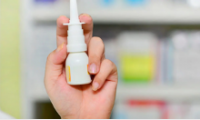-
Boston Scientific expects ‘dramatic shift’ to pulsed field ablation to fuel fast growth through 2026
- Source: drugdu
- 625
- September 25, 2023
-
Photobiomodulation in sleep has more therapeutic effects for Alzheimer’s disease than in wakefulness
- Source: drugdu
- 485
- September 25, 2023
-
Takeda settles antitrust lawsuit over gout drug Colcrys after trial kicked off
- Source: drugdu
- 355
- September 25, 2023
-
Lilly Sues Pharmacies, Spas and Wellness Centers Over Unapproved Mounjaro Copycats
- Source: drugdu
- 283
- September 23, 2023
-
CMS leader defends breakthrough device reimbursement proposal at House hearing
- Source: drugdu
- 252
- September 22, 2023
-
U-M receives CDC grant to establish new center to improve public health response to disease outbreaks
- Source: drugdu
- 295
- September 22, 2023
-
FDA Rejects ARS Pharmaceuticals’ Needle-Free EpiPen Alternative
- Source: drugdu
- 351
- September 22, 2023
-
CDMOs SK pharmteco, Oxford Biomedica make cell and gene therapy manufacturing M&A plays
- Source: drugdu
- 255
- September 22, 2023
-
Merck KGaA links with BenevolentAI and Exscientia to expand AI capabilities
- Source: drugdu
- 388
- September 22, 2023
-
Researchers discover how neurons die in Alzheimer’s disease
- Source: drugdu
- 257
- September 22, 2023
your submission has already been received.
OK
Subscribe
Please enter a valid Email address!
Submit
The most relevant industry news & insight will be sent to you every two weeks.

















